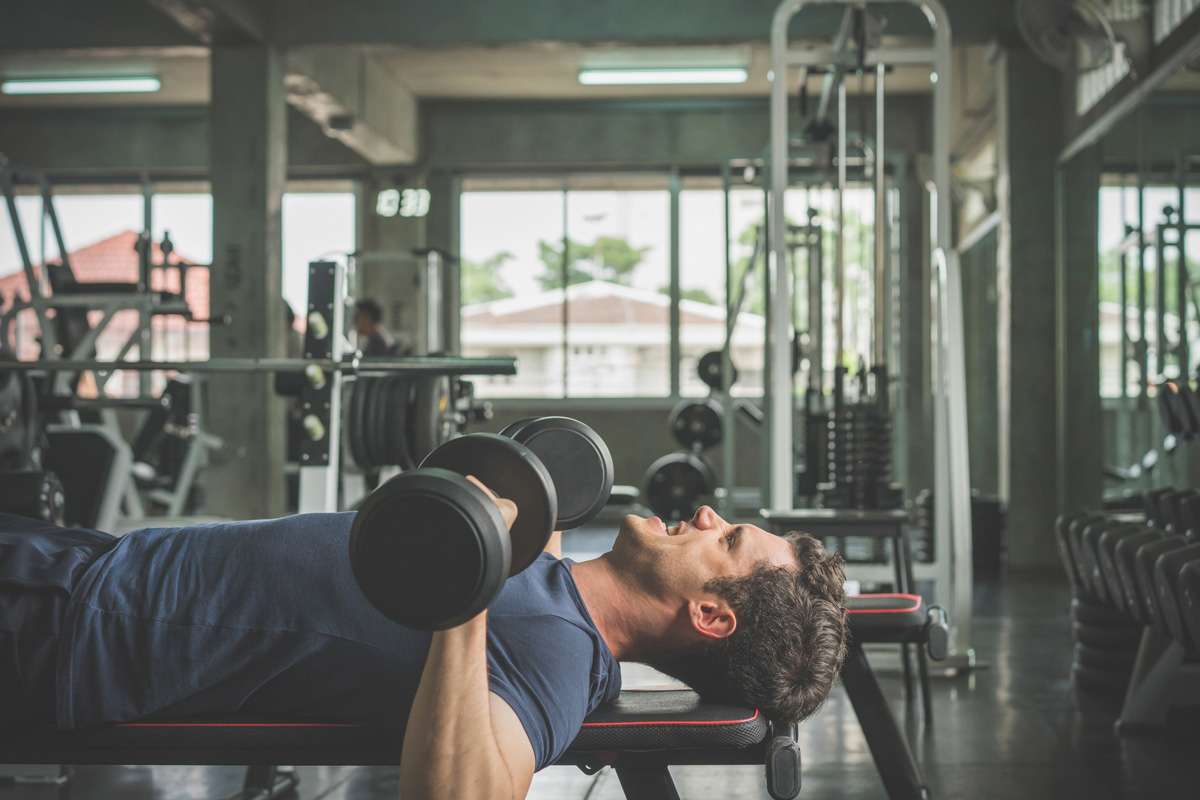Each of us who starts the adventure with training sets a main goals. These goals can be very different. It is popular, that ladies start training with a desire to lose excess weight. On the other hand, for men the main goal is to increase strength and muscle mass. The beginnings instil optimism, e.g. the body changes as a result of regular training. Unfortunately, over time, the effects are minor or they are missing. Why?
Advice from Ancient Greece
Many tips on how to train effectively can be provided by the character of Milo of Croton. Our hero was a wrestler and one of the greatest ancient athletes. Milo was a six-time Olympic victor. For many years he had no equal. The most important factor of his success was unimaginable physical strength. It was built based on an innovative training system for those times. As a young man he believed many legends, so he bought a young bull. He was using this bull during the trainings. How? The method seems banal. He had taken it on his shoulders and regularly carried it along the Olympic stadium. The bull has grown, its body weight also. Thanks to this, Milo's body adapted to the increasing training load. Over the years he became bigger and stronger. And this is what a pioneering example of a progressive increase of load and volume in the training looks like. That will be our signpost and a tip in the conversation about planning a workout.
Invest wisely

Say hello to Adam, who will be our reflection of the ancient wrestler Milo. But the difference is that Adam does not carry animals on his shoulders. On a daily basis he carries briefcases for documents because he is the director of an international company. On his own time, for several years, he regularly trains on the gym to improve his physical condition.
Adam value his time and from the beginning he approached the subject ambitiously. He realized that his new hobby is a bit like a business which he knows very well. Activities aimed at achieving the highest possible return on investment were obvious to him. In this case, Adam invested his free time and money in the name of improving his health. From the beginning he wanted to organize his activities and train in a planned manner. So he made his own training plan, based on the knowledge he gained by reading fitness magazines and searching message boards. The first results turned out to be more than satisfactory. Adam looked and felt better. Unfortunately, over time the changes became less and less noticeable. Because of this, the whole process became less and less exciting and tedious. Why? The truth is, for any beginner, any training plan will work. Worse or better, it will cause changes in the body. The problem arises when the training experience increases. It happens because the body quite quickly adopts changing conditions, in this case weights and training methods. The more advanced the person is, the better developed his or her training plan needs to be. Although Adam’s plan was not bad, but it did not include many important variables that are not mentioned at all, or not enough.
Variables that should be controlled are:
1. Training volume – in simple terms, it is a total amount of work we do in training. It includes:
a. duration of training,
b. distance traveled (e.g. of running training),
c. total weight (measured in kilograms) in resistance training.
2. Intensity – in strength training it is the percent of the maximum weight (%MW) that we can lift only once. The heavier weight we lift, the more intensive our training is. The closer we are to our maximum capabilities, the fewer repetitions we can do. For example for Adam the maximum bench press weight is 100kg, so the 80% of his intensity (80% MW – Maximum Weight) means bar that weighs 80kg. I would like to add that you should not confuse the concept of intensity with the difficulty of training.
3. Training density – in simple terms it is the frequency with which Adam performs training units on a scale of e.g. a week.

Important message number one.
All of the variables listed above exist in close correlation with each other. The size of one determines the size of the other. Particularly, a compromise between volume and intensity should be found, because these two variables are inversely proportional. In practice, it means that an increase in training volume should result in a decrease in intensity. Otherwise, when we train for a long time on a high percentage of our maximum capabilities (85% 1MW +) in combination with a high total training volume, the risk of injury and overtraining will increase significantly.
Important message number two (probably the one that ¾ men who are reading this waiting for).
When the goal number one is muscle mass development, total training volume is the most important of all variables. Many studies and practices show a clear correlation between the increase in training volume over time and the development of muscle mass.
Training volume is the most important

Briefly, if Adam's dream is to become the most muscular director in the company's history, he must focus primarily on the volume of training. In that case the intensity of training (understood as % of Maximum Weight - 1MW) moves to the background. So there is no need and obligation to work out with a very large submaximal weight. Of course, the training weight of a barbell or dumbbell cannot be extremely low. Often lifting 5kg dumbbells 50 reps will arouse the feeling of pity of people in the training room. And the next – it defeats the purpose. Even if the most important goal is to increase muscle mass, intensity should remain at a minimum of 50-60% 1MW. This level will provide sufficient mechanical stress for muscle fibers.
Therefore, the majority part of training which is focused on the development of muscle mass should be planned in the range of 6 to 12 repetitions, which will translate into an intensity of 60-80% 1MW.
Until that moment two important questions should arise in our minds:
1. How to calculate the total training volume of your workout?
2. How large training volume will be the optimal for development? 5 series per week, 10 or maybe 20?
Due to the wide range of the topic we decided to divide the article into two parts. Next week, we will answer the above questions and raise questions about training volume, volume periodization for optimized training, as well as the most common mistakes that can stop your development.





